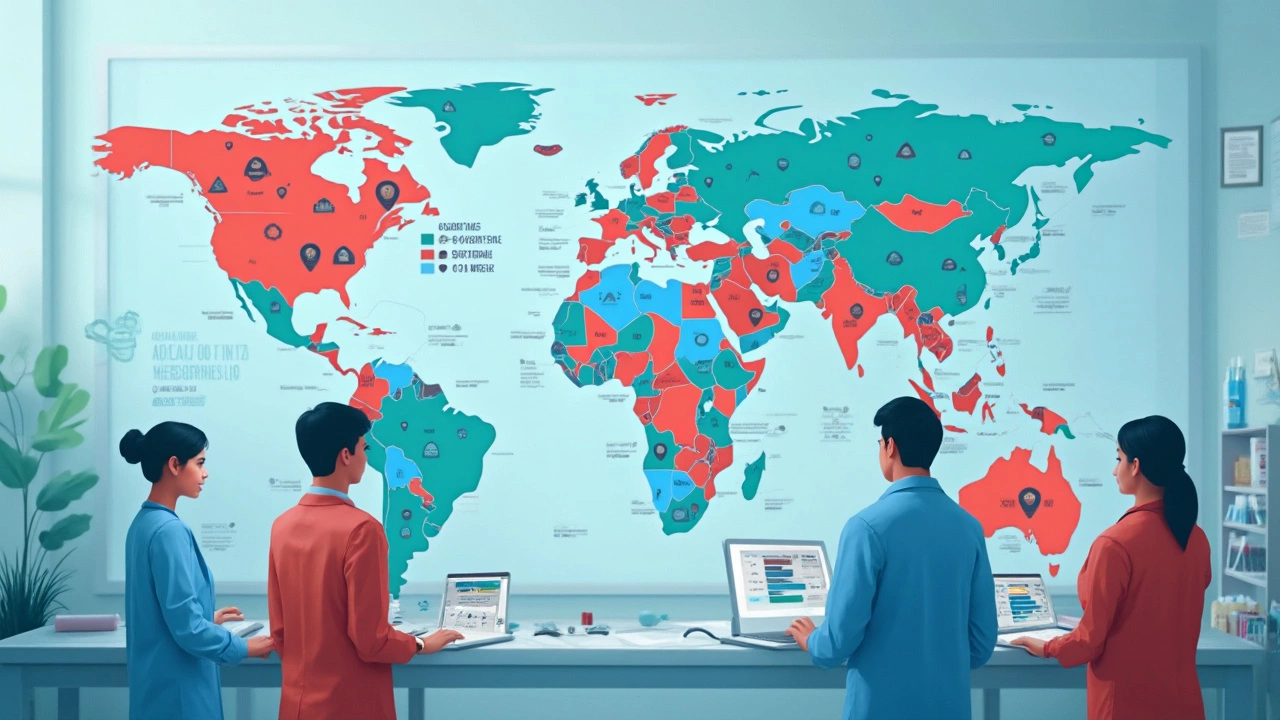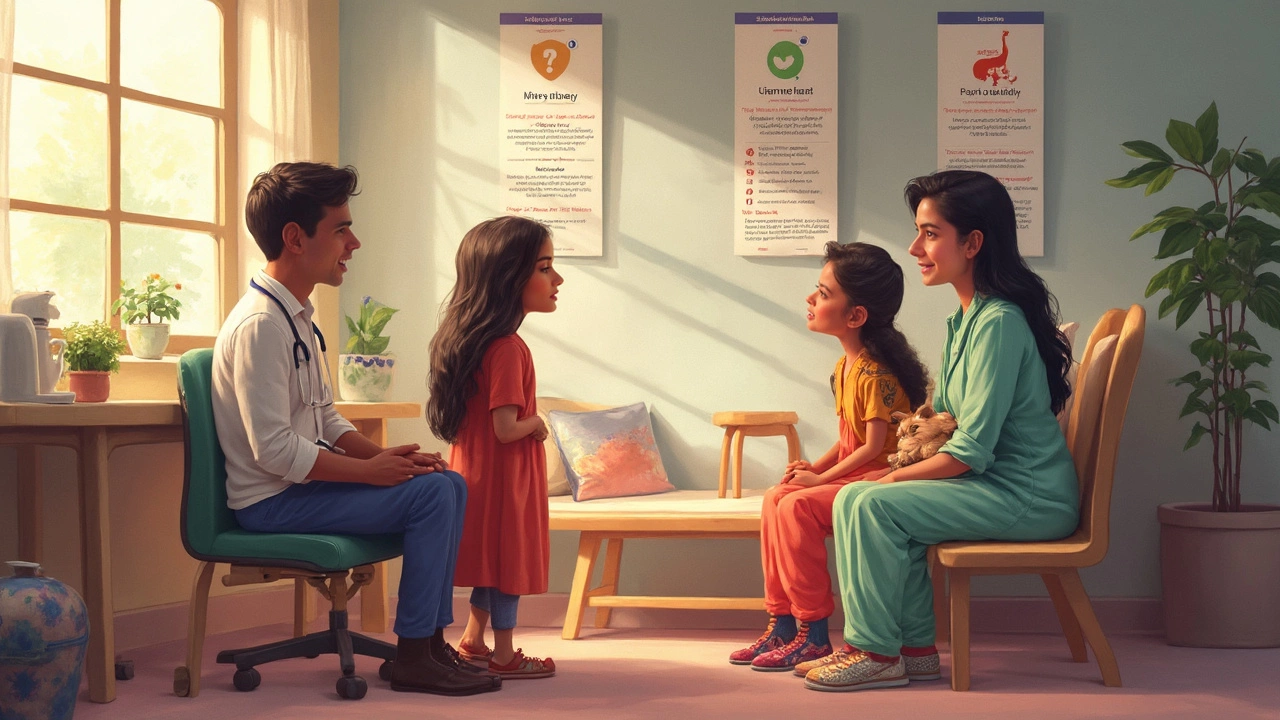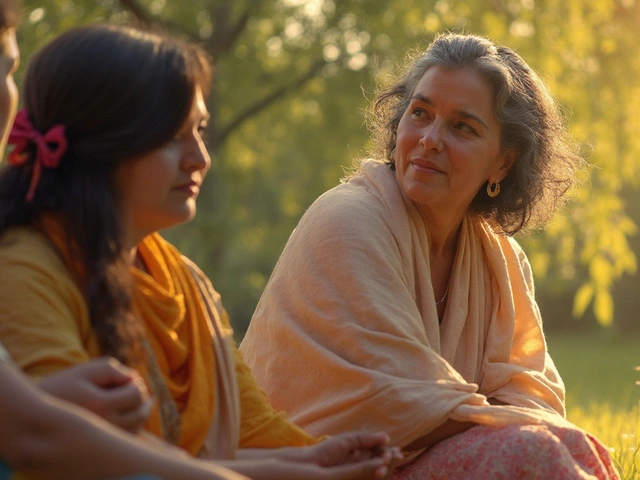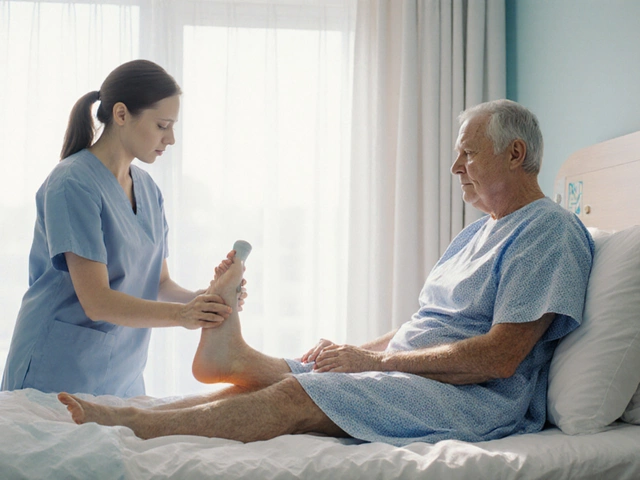The idea of “the sickest country” probably sounds wild, but health stats don’t lie—some spots get hit way harder than others by certain diseases. If you’re planning to travel for medical care, knowing where people get sick most often isn’t just trivia. It can totally change your plans, from picking a clinic to deciding which country won’t send you home with more problems than you brought.
UN data keeps ranking the Central African Republic, Sierra Leone, and Afghanistan near the top when it comes to sickness and disease rates. Meanwhile, countries like Japan, Switzerland, and Australia have much lower sickness rates and higher life expectancy. But don’t just judge a book by its cover. Those “healthier” places aren’t always the biggest hotspots for medical tourism. Price, access to tech, and specialty treatments all play into it.
- World Sickness Scorecard: Who Tops the List?
- Why Are Some Countries Sicker Than Others?
- How Sickness Rates Impact Medical Travelers
- Tips: Staying Healthy While Traveling for Treatment
- Popular Medical Tourism Spots—And Their Health Risks
World Sickness Scorecard: Who Tops the List?
If you’re eyeing up a destination for healthcare, knowing which countries have the most people getting sick can save you a lot of trouble. Let’s be real: not every country is created equal when it comes to health. The World Health Organization (WHO) and United Nations numbers show a pattern—some countries face far more sickness than others, no matter how cheap flights or treatments might look online.
Here are the highest-ranking countries for sickness rates these days:
- Central African Republic: Consistently tops the list for “most unwell” due to infectious diseases like malaria, HIV, and a real lack of clinics or reliable medicine.
- Sierra Leone: Similar issues—lots of malaria, poor emergency care, and unsafe drinking water make it super tough for locals to stay healthy.
- Afghanistan: Years of conflict have wiped out hospital networks, and many folks battle everything from malnutrition to tuberculosis.
- Chad: Minimal vaccine coverage, dirty water, and not enough doctors leave loads of people exposed to preventable diseases.
Contrast that with places like Singapore, Japan, Norway, and Switzerland. Their rates of infectious disease are extremely low, chronic illnesses are managed pretty well, and people there live decades longer on average. So if you see headlines about “best places for treatment,” remember—global sickness rates don’t always tell you everything, but they give you a critical head start on what to expect.
Why Are Some Countries Sicker Than Others?
This question comes up a lot, especially for medical tourists comparing their options. The truth is, no single reason explains why people in some countries get sick more than others. It’s a mashup of access to clean water, healthcare, income, education, and even climate. When these basics are out of whack, sickness goes up fast.
Poor countries tend to have higher disease rates, mostly because their healthcare systems are weak or overwhelmed. For example, the Central African Republic and Sierra Leone have just a handful of doctors per 10,000 people. Compare that to Germany or Japan, where doctors are everywhere and hospitals usually have high-tech stuff most locals can afford.
It isn’t just about medical care. Access to basics like safe food, clean water, and working toilets makes a huge difference. In places where clean water is a luxury, diseases like cholera or typhoid show up way more often. Malaria still causes hundreds of thousands of deaths every year in sub-Saharan Africa, just because there aren’t enough mosquito nets and basic meds.
- Education also plays a big role. Countries with high literacy usually have lower sickness rates because people understand how to avoid disease, use healthcare, and keep their families healthier.
- Poverty drags everything down. Low-income areas get sicker because people can’t afford food or medicine, and sometimes don’t have access to doctors at all.
- Even weather can impact how sick people get. Tropical countries face more mosquito-borne diseases, while colder climates might deal more with the flu or pneumonia.
Just look at some quick numbers that put this into perspective:
| Country | Doctors per 10k people | Life Expectancy | Access to Clean Water |
|---|---|---|---|
| Japan | 24 | 84 | 100% |
| Central African Republic | 2 | 55 | 40% |
| India | 9 | 70 | 93% |
| USA | 26 | 76 | 99% |
When you’re looking up sickness rates for a possible medical destination, these are the first things to check. Don’t just focus on the fancy clinics—find out if the wider country is struggling with basic public health. That can change your whole experience, and even your outcome.

How Sickness Rates Impact Medical Travelers
If you’re eyeing another country for medical treatment, paying attention to sickness rates isn’t just paranoid—it’s smart planning. High sickness rates in a destination can mess with your recovery and even expose you to new infections that your body isn’t used to handling. It’s not just about exotic fevers either; even stuff like drug-resistant bacteria is more common in certain places.
Here’s why you want to keep your eye on this:
- You might catch something totally unexpected—think tuberculosis in parts of Southeast Asia, or dengue fever in tropical countries.
- Facilities in “sicker” countries often get overwhelmed when there’s an outbreak, making your own care less reliable.
- Your immune system could be weaker after an operation, so even everyday viruses can feel like a big threat abroad.
- Longer hospital stays or follow-ups can mean more chances for an infection, especially in spots with lower hygiene standards.
Check out this quick table showing the rate of common infectious diseases per 100,000 people in some popular medical tourism destinations versus global hotspots:
| Country | Tuberculosis Rate | Dengue Cases | Common MDROs (Multidrug Resistant Organisms) |
|---|---|---|---|
| India | 193 | 30,000+ | High |
| Thailand | 151 | 63,000+ | Moderate |
| USA | 2.7 | Rare | High |
| Central African Republic | 547 | Unknown | Very High |
| Singapore | 37 | 22,000+ | Moderate |
Source: World Health Organization, CDC, 2024
It’s not always the poorest or “sickest” country that you need to avoid, but those stats are your warning sign. People traveling for care to countries with high sickness rates sometimes come home with infections they can’t easily treat at home—or run into bugs that hospital insurance back home won’t even cover.
It’s worth remembering, medical tourism is about finding the right balance between world-class care, price, and a safe recovery environment. Do your research, talk to your doctor, and check those health stats before booking that ticket.
Tips: Staying Healthy While Traveling for Treatment
Headed abroad for medical care? The whole idea is to get better, not to swap one health problem for another. Staying safe while you travel starts way before you even book the flight. Here’s what actually makes a difference:
- sickness rates: Look up your destination’s current health stats, especially for infections, antibiotic resistance, and local outbreaks. Use the CDC’s or World Health Organization’s travel health updates.
- Get the right vaccines. Some countries require proof, and some diseases—like hepatitis A or typhoid—are far more common in certain areas. Check this early; shots might take a few weeks to work.
- Don’t skip travel insurance. Around 5% of international medical tourists end up needing extra treatment because of complications, according to a 2023 Journal of Travel Medicine report. Without insurance, that can get eye-wateringly expensive.
- Water safety is huge. In places with iffy tap water, only drink bottled or boiled water—even for brushing teeth. Food-wise, avoid raw foods unless you’re sure they’re handled cleanly.
- Stick to your post-op plan. A lot of people get sick because they ignore their doctor’s instructions once they’re outside the hospital.
- Hand hygiene: It sounds boring, but travelers who wash their hands often get 30% fewer stomach bugs, based on CDC numbers.
Check out this quick breakdown of common risks and how often travelers get them, based on recent CDC and WHO data:
| Risk | Chance for Travelers | Common Countries |
|---|---|---|
| Traveler's Diarrhea | 30-70% | India, Egypt, Mexico, Thailand |
| Respiratory Infections | Up to 20% | Worldwide, especially high-traffic urban zones |
| Healthcare-Associated Infections | 1-2% after surgery | Lower in top-tier hospitals; watch out in developing regions |
| Dengue/Vector Diseases | 1% or less | Southeast Asia, South America |
One last solid piece of advice comes from the Mayo Clinic’s international patient team:
"Always research your hospital’s accreditation, infection rates, and after-care. A recognized certification like Joint Commission International means a much safer experience."
Bottom line: Put in the homework, keep your hands clean, use common sense with food and water, and don’t cheap out on insurance. You’ll thank yourself later.

Popular Medical Tourism Spots—And Their Health Risks
People chasing affordable surgeries or quick appointments don’t always check the health risks first. Certain medical tourism destinations are magnets for travelers, but the risks there can be just as real as the deals. Let’s break down the big names and what you actually need to know before booking anything.
The heavy hitters? Think Thailand, India, Mexico, Turkey, and South Korea. They’ve got strong reputations for everything from dental work to plastic surgery. Costs are way lower than the US or Western Europe and waiting times are short. But each spot has its own warning labels.
| Country | Popular Procedures | Top Health Risks | Extra Notes |
|---|---|---|---|
| Thailand | Plastic surgery, gender reassignment, dental | Dengue fever, antibiotic-resistant infections | Hospitals are modern, but post-op care varies widely |
| India | Heart surgery, orthopedics, fertility | Air quality, hospital-acquired infections | Accreditation matters—a lot. Not all clinics are created equal. |
| Mexico | Dental, weight loss surgery, cosmetic | Contaminated water, drug-resistant bacteria | Watch cross-border clinics. Some fly under the radar for safety checks. |
| Turkey | Hair transplant, cosmetic, eye surgery | Hepatitis, post-op complications | Language barriers can slow things down if something goes wrong. |
| South Korea | Plastic surgery | Air pollution, infections | Aftercare support may be limited if you don’t speak Korean. |
Here’s how to keep yourself out of trouble if you’re traveling for treatment:
- Always check if the hospital or clinic has international accreditation (like JCI).
- Ask about infection rates and how they handle emergencies.
- Bring complete records of your medical history and allergies.
- Check if there’s a risk of food or waterborne diseases—stick to bottled water.
- Consider travel insurance that covers complications from surgery abroad. Regular policies often don’t.
One last thing: outbreaks or epidemics in certain countries can mess up even the best travel plans. Look up recent health alerts for your destination. Health isn’t something to gamble with, even for a great deal.








